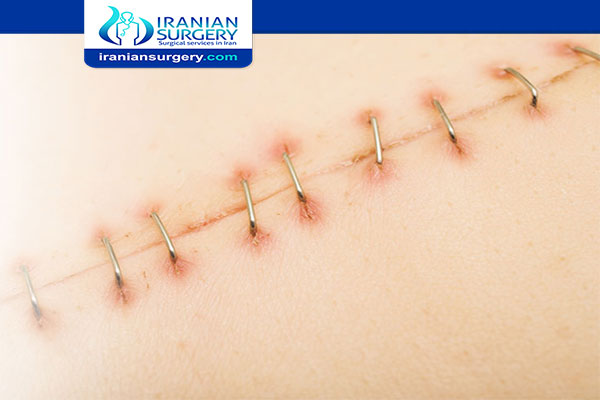How long does a laparotomy scar take to heal?
Can scar tissue cause pain years after surgery?
Can abdominal scar tissue cause pain?
What does pain from scar tissue feel like?
How long should a scar hurt after surgery?
Surgery that involves a cut (incision) in the skin can lead to a wound infection after surgery. Most surgical wound infections show up within the first 30 days after surgery.
Surgical wound infections may have pus draining from them and can be red, painful or hot to touch. You might have a fever and feel sick.
A laparotomy is performed under general anesthesia. The surgeon makes a single cut through the skin and muscle of the abdomen, so that the underlying organs can be clearly viewed.
Possible complications include infection and the formation of scar tissue within the abdominal cavity.
Read more about: laparotomy and laparoscopy
Read more about : Exploratory Laparotomy
Read more about : General surgery
Read more about : Colorectal cancer surgery
Read more about : Anal Cancer Treatment
Read more about : Bone cancer stage
How long does a laparotomy scar take to heal?
Laparotomy may cause a red, painful, raised scar across the abdomen, and it may take 6–8 weeks for this scarring to heal. In some cases, the scar will fade over time, but in others, it may be permanent.
Some people may develop abdominal adhesions after the surgery. Abdominal adhesions are bands of scar tissue inside the abdomen.
Read more about Laparoscopic surgery
Read more about: Laparotomy recovery
Can scar tissue cause pain years after surgery?
In some cases, pain from scar tissue is noticeable right away. In others, the pain may come on years later. Sometimes this has to do with nerves that develop after the injury itself heals. Another possibility is that a severe burn or a deep wound can eventually affect underlying bones and joints, leading to subsequent pain at the site of the scar tissue. Despite your level of pain, treatments are available for scar tissue and its uncomfortable symptoms and appearance.
Can abdominal scar tissue cause pain?
In some cases, pain from scar tissue is noticeable right away. In others, the pain may come on years later. In most people, abdominal adhesions do not cause any symptoms. Adhesions that partially block the intestine from time to time can cause intermittent bouts of crampy abdominal pain. Patients with scar tissue pain typically complain of neuropathic pain, during which continuous pain is present, alternating with spontaneous attacks of stabbing pain in the scar area. This pain can sometimes occur after a complaint-free period lasting some months postoperatively.
Read more about: Laparotomy recovery exercises
What does pain from scar tissue feel like?
Scar tissue can have a local area of pain when touched or stretched or it can produce a referred pain that feel like that of a nerve which is a constant annoying burn that occasionally turns sharp. This may be due to either trapping a nerve in the tight scar tissue or by damage to the nerve endings during the initial injury after which painful and highly sensitised little nerve bundles called neuromas can form.
Read more about: Laparotomy surgery in Iran
How long should a scar hurt after surgery?
When the body creates scar tissue after the injury, though, a person may not experience scar tissue pain until much later. Scars can take up to 1 year to mature fully and go through four stages of healing. This slow process may explain why some people do not experience scar tissue pain immediately.
Read more about: Laparotomy recovery diet


